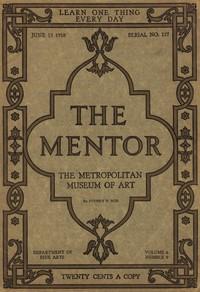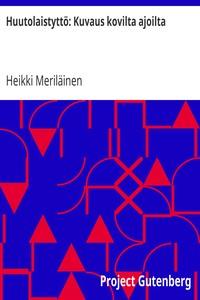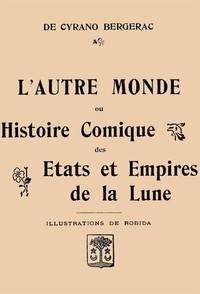Read this ebook for free! No credit card needed, absolutely nothing to pay.
Words: 12908 in 6 pages
This is an ebook sharing website. You can read the uploaded ebooks for free here. No credit cards needed, nothing to pay. If you want to own a digital copy of the ebook, or want to read offline with your favorite ebook-reader, then you can choose to buy and download the ebook.


: The Mentor: The Metropolitan Museum of Art Vol. 6 Num. 9 Serial No. 157 June 15 1918 by Noe Sydney P Sydney Philip - Painting; Metropolitan Museum of Art (New York N.Y.) The Mentor
THE MENTOR 1918.06.15, No. 157, The Metropolitan Museum of Art
LEARN ONE THING EVERY DAY
JUNE 15 1918 SERIAL NO. 157
THE MENTOR
THE METROPOLITAN MUSEUM OF ART
DEPARTMENT OF VOLUME 6 FINE ARTS NUMBER 9
TWENTY CENTS A COPY
DOES ART PAY?
"Art is a vain pursuit," says the shop-keeper. In that conviction many an immortal painter, like Corot, has, in his youth, been packed off from home by a shop-keeping parent, and made to shift for himself. "The stomach must be filled," exclaims the shop-keeper, "let Art wait on that." To which the young painter answers, "Art must find expression first. Let the stomach wait." And so the shop-keeper and painter pursue their separate ways, and it often happens, in the course of time, that they come together again. The painter gains recognition, and his pictures make him famous. The shop-keeper rises to be a millionaire merchant--and becomes a patron of Art.
It is all very well to talk, as some cultured people do, about Art as a kind of goddess that calls into existence paintings, statues, temples, and museums, but, as William C. Prime observed some years ago, "Art is, after all, a practical work. Her noblest products and her homeliest always did and do cost money. That was a wise thought, in the earliest days of Art, of the monarch who recorded on the Great Pyramid the quantity of onions, and radishes, and garlic consumed by its builders."
There are still left some who ask, 'What is the use of beauty? What is the practical good of increasing art production? How does it pay?' The life blood of modern commerce and industry is the love of beauty. A great city, its wealth and power, rest on this foundation--trade in beauty, buying and selling beauty. Is there any exaggeration in this? Begin with the lowest possible illustration and ask the questioner, 'Why are your boots polished? Why did you pay ten cents for a shine? How many thousand times ten cents are paid every day in a city for beauty of boots?'
Take from the people their love of color, their various tastes in cotton prints, and one factory would supply all the wants supplied by fifty. Consider for one instant what is the trade that supports your long avenues of stores crowded with purchasers, not only in holiday times, but all the year around. Enumerate carpets, upholstery, wall papers, furniture, handsome houses, the innumerable beauties of life that employ millions of people in their production, and you will realize that, but for the commercial and industrial love of beauty, a city would be a wilderness, steamers and railways would vanish, wealth would be poverty, population would starve. Yes, there is money in teaching people to love beautiful things.
Free books android app tbrJar TBR JAR Read Free books online gutenberg
More posts by @FreeBooks


: L'autre monde; ou Histoire comique des Etats et Empires de la Lune by Cyrano De Bergerac Robida Albert Illustrator - Space flight to the moon Fiction; Moon Fiction; Science fiction French FR Philosophie Religion et Morale; FR Humour; FR Illustrateurs; FR S





